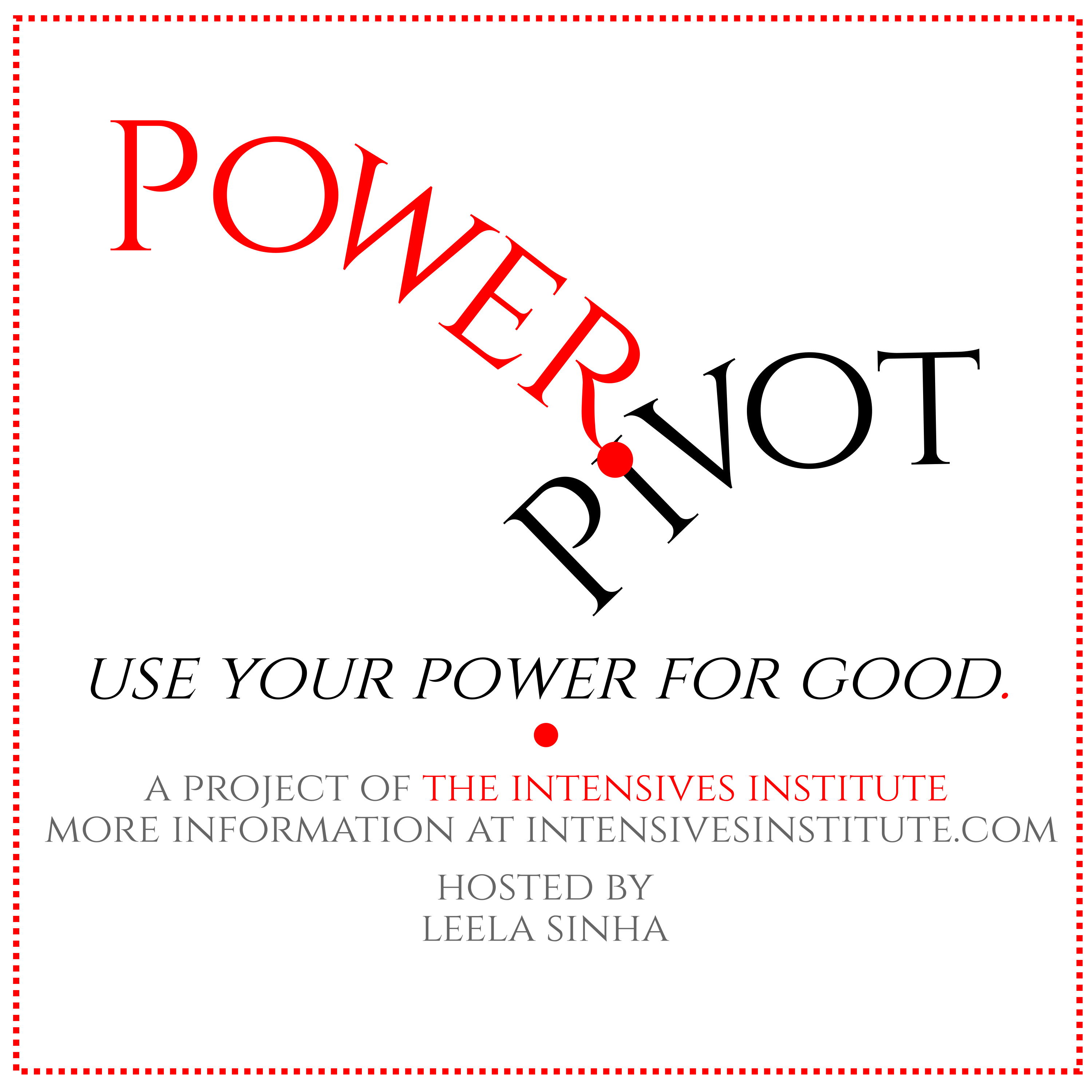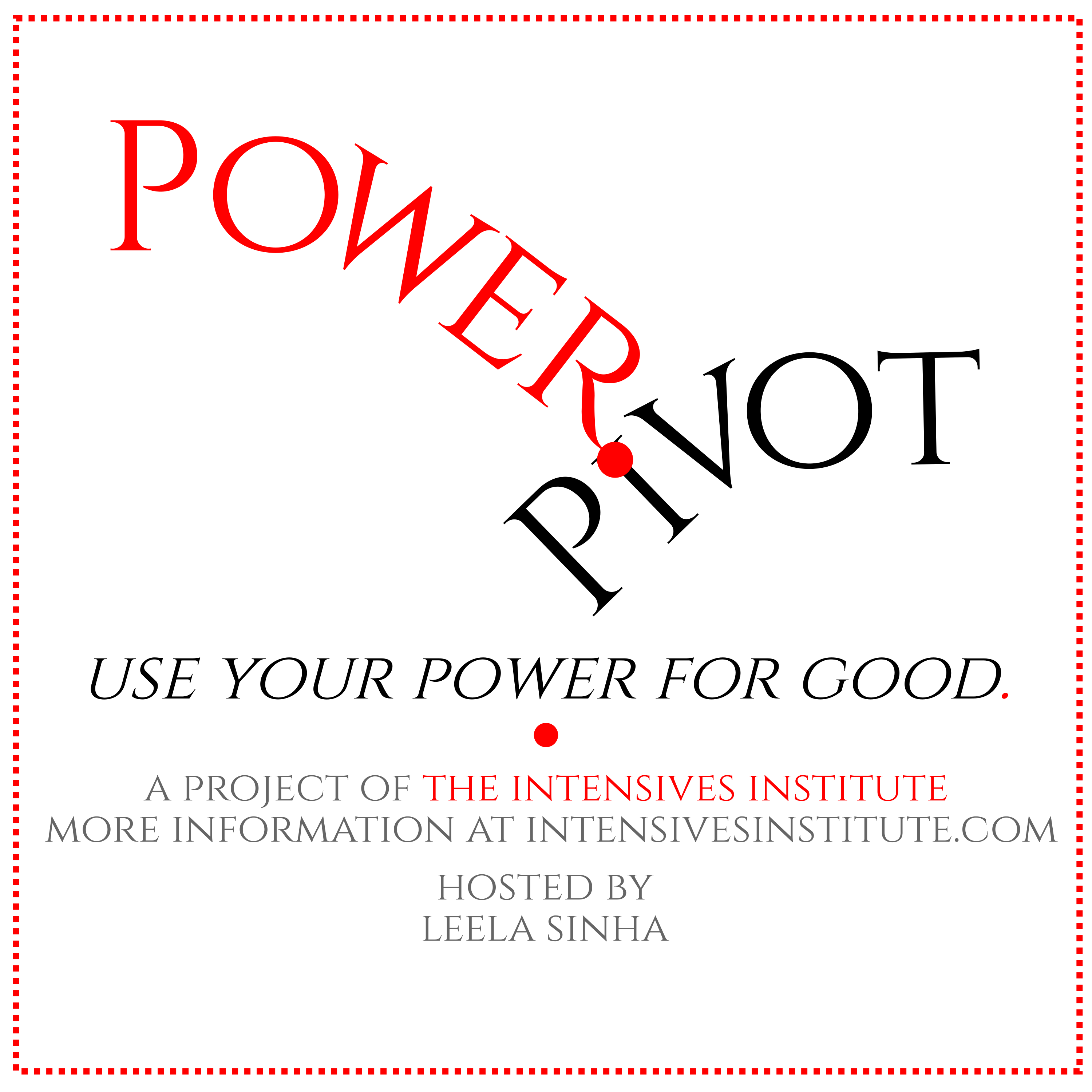Episode 75
in praise of phases
"You have choices. But the first, most important choice, is to celebrate who and how you are as an intensive."
As an intensive, your phasic work cycles- and perhaps your phasic chaos cycles- are part of who you are. They are as much a part of you as the color of your eye. Learning to embrace those phases, instead of fighting them, will help us to accomplish our goals. We need the flow, the go-go-go, the connecting six seemingly unrelated things before breakfast. And we need the deep rest so that we can redecorate our minds and start the process again.
Transcription and notes:
https://dev.intensivesinstitute.com/captivate-podcast/in-praise-of-phases
Recorded 13 February 2023.
Transcript
Hi, everyone, thanks for tuning in.
Today I want to talk specifically about something about intensiveness that comes up and goes away and comes up and goes away. Which both is and isn't a metaphor. Because what I want to talk about is phasic work cycles. It seems to be kind of bubbling under the surface.
This is not uncommon at the beginning of the year, everyone's thinking about goals and, and am I meeting my objectives, we're coming to the middle of quarter one, blah, blah, blah, blah, blah, blah, blah. But this is how we work. This is just how we work. We don't do it or not do it on purpose or not, for a particular season a particular set of goals or not, this is just how we are. Sometimes we have to circumvent it.
So phasic work, which is this thing where we go, go go, and then we stop, and we rest, and then we go, go go, and then we stop, and then we rest. And we try to resist it, especially when we feel like we should be doing something. But this isn't about should, this is just about who we are. It's like saying, well, you should have blue eyes, it just doesn't work. If you have blue eyes, you do. And if you don't, you don't.
And so we work in phases. We work in this on and off cycle. We ebb and we flow like the tide. We rise and we set like the sun. This is not an unnatural way to be. It's not a weird thing. In fact, extreme consistency is less natural and a little more weird. Very little is actually consistent. And we are part of the world, that is not consistent. We are instead phasic.
We are consistently phasic. And often we're taught to believe that that's a disadvantage, at least. Like okay, maybe it's how we are and we just have to accept it because we can't change it. But that's the thing, right? You just have to accept it because you can't change it and not "this is how we are and it's glorious, and wonderful and useful and helpful."
They've done some studies that show that part of the reason that a lot of creative people have chaotic workspaces is because it is the very chaotic juxtaposition of unexpected things that leads to some of the insights that are the creativity, the creativity emerges specifically from chaos, less from order. This isn't true for everyone. But for people for whom it is true, it is very true. And that's why no matter how much organizing these folks do, no matter how much organizing we do, we ultimately end up back at chaos. And sometimes we have to have a phasic chaos cycle too: organize, and then it devolves into chaos.
Organize, and then it evolves into chaos. Organize, and then it becomes something greater. Organize, and chaos. Organized and chaos. Organized and chaos. Back and forth. Like so many creation myths, like so many stories of the universe. From chaos, there became order, and then there was chaos again, and then order again. And then chaos again and round and round and round because- phasic, more than consistency.
So what are the things we can celebrate about our phasic work cycle, about our on and off about our ebb and flow? Well, for one thing, it lets us get deep into rest. When we are not in the flow when we are in the ebb; when we are in the retreat, when we are in the stillness, we get to completely unplug because there's nothing that we're maintaining, we just disconnect all the way. And sometimes that lets things completely reorganize.
Like it's one thing to shelve your books in a different way. It's another thing to empty your entire office out, paint it, redecorate it, reorganize it, and change what you use it for. Change how you use it, maybe bring your recording studio in. Maybe move your painting out of your office and into a more creative space, a studio. And we get to do that because we have this on and off. This go go go, come to completion, then stop.
And the reason that we come to completion even with the 80% problem- remember the 80% problem is where we get 80% of the way through a project and we know that it can be done, how It should be done, and that we could do it. And so the mystery is gone, the adventure is over, and we're not interested anymore. So what gets us through that last 20%? When we're phasic, and we're starting to phase out, we're starting to phase into the rest portion? What gets us there what gets us there is the fact that the satisfaction the dopamine, the joy is at the end.
It's in a holding the completed thing, it's in using the completed thing. It's in every time I pick up this thing, I know that I created it to meet my own needs, because the world doesn't do that very well. And so I made a thing that suited me better than anything else. And now I get to pick it up and use it every day. I made a custom thing.
Some of you may know I made a banyan, which is a weird 18th century glorified bathrobe situation. And there are two kinds. There's a very unfitted kind that kind of resembles a kimono because that's what it was based on. And then there's the other kind that's more related to some of the northern South Asian clothing at that time. And still today, as it turns out.
Anyway, it's a fitted, long coat meant for wearing around the house. Meant for going over, at that time, your breeches and your waistcoat, and your shirt. And your cravat. Like you wouldn't be undressed, undressed under your Banyan, but you would be relaxed under your Banyan. There was no- it was a replacement for the frock coat indoors in a time when indoor heat wasn't a thing. And every time I put it on, I get this satisfaction of having made a thing that actually fits me. Which- you know how few of us have access to clothes that actually fit us.
But I made this thing that actually fits me. It actually fits me. And every time I put it on, I get a little bit of the the echo of the joy of having completed the thing. That's what got me. I'm still at like 95%. I got a couple more buttons to sew on. But that's what got me that far. That's what got me that far. Did I think about embroidering it? Yes, but this is actually the rough draft. And what I intend to do is make another one that's made out of already embroidered fabric.
So if there's embroidery to be added to it, that will be an additional thing that I will do at some time in the future as its own project. Embroidering the Banyan becomes its own project so that I don't have to slog through it as though it's the end of a project that I already feel like I finished.
But even in the face of the 80% problem, we do eventually finish things. The satisfaction of completion gets us to the end. And then we rest. We rest and we can feel all those synapses disconnecting and reconnecting and rebuilding. We're redecorating inside of our heads. And in order to do that, we need to not be trying to use the room.
And so we're not. So we're not. We don't use the space when we're redecorating the space. When we're reorganizing the space, it would be like trying to put on a play while building a set for a different play. We don't do that. We strike the set, we let the theater go dark. And that- striking the set and letting the theater go dark- is the thing that allows our creative inspired energy to come back.
But what's good about the work phase, what's good about the Go phase? The stop phase is deeply restful, if we allow it, if we recognize it, if we treat it like the thing it is. But what about the other half? What about the, what about the Go phase? It's often mistaken for mania, like technical clinical mania. But usually that's not what it is.
It's just how we work. It's just how we are, we just go. We get an inspiration, we understand how all the pieces fit together. And the minute we begin to understand how the pieces fit together, we go. And the more we go, the better we understand about how the thing works. The better we understand what needs to be done and where we will need support and where we are going.
I've been watching the great pottery throwdown which I know I'm late to the party, but here we are. And there's this thing that happens where some people come in with like engineering drawings for the project they're working on and other people come in and just wing it. And because they're under such time constraints, often the engineering drawing people, it pays off. It works out better for them because they've thought about where the clay needs to go to support what and so on and so forth.
But there's always this moment, even if they come in with engineering drawings, where something that you couldn't see on paper happens with the clay. With the three dimensions and the wetness and the collapse and the drying times and the shape and the support. And they have to improvise, they have to figure it out.
We're great at that. We're great at taking a plan or not. And then improvising off it. Taking an understanding that we have, in our head, a mental structure, that's probably pretty good to begin with, recognizing the challenge as it's coming, as it's approaching, or as it's on top of us, and doing something about it. And that's part of why we're so good at crisis. Sometimes people say that being good at crisis is a trauma response. And I'm not going to speculate about that. But what I do know is that being good at crisis is something that we see pretty much across the board in intensives.
Most intensives are really great at crisis. And we're great at crisis because our natural work mode is Go Go Go Go, go go go. Our natural work mode is drive until we get to a place that feels like a resting place like we get to the top of the mountain, although- I will say I've been hiking into a canyon, a very short canyon that's near my house. And I decided coming out of it the other day that I didn't have to walk the whole way without stopping.
Where did I get the idea that I had to do the whole thing without stopping? Probably because I'm an intensive. Possibly because we live in a world that kind of valorizes incredible feats of athleticism, especially if you can do them as though they are nothing. And I am not in that place right now with my body. One summer a long time ago, I worked at a camp that was on the side of a mountain. And by the end of the summer, I could run up the side of the mountain because I was up and down the side of the mountain multiple times every day. My cabin was at the bottom, the dining hall was at the top. But I'm not in that place in my life right now.
Walking back up is very short canyon is actually fairly tiring. And so I decided that I could just walk as far as I could walk and then rest until I was ready to keep walking. And it was suddenly very easy. And I realized that the reason that I thought it had to be hard to go for a walk is because I was trying to walk in a way that didn't work for me. So that happens to us too.
Sometimes we try to do things in our intensive way. And we discover that that's not going to work. It's just not going to work, we don't have whatever we would need to do it go go go go go. And sometimes it's executive function that we don't have. And sometimes it's a tool. Sometimes it's a stamina thing. Sometimes it's all three.
If we're having a mental health episode- and a lot of us do- anxiety or depression can completely interrupt your ability to do something in a state of flow, uninterrupted. Sometimes it just needs to be done in the way that it can be done, which is a little at a time, a moment at a time, a breath at a time. Sometimes you get there, sometimes you don't. Sometimes you don't even finish it which is like- what? Like sometimes you can't finish it, as opposed to losing interest and wandering away don't finish it. Sometimes you just don't finish it because you don't- you can't- you meh? It's just not happening.
So Okay. When you are being an intensive, you get to celebrate that. And being an intensive means not being consistent, except in your phasic-ness. And so you get to celebrate that, too. You get to celebrate the moments where you pragmatically, strategically, borrow expansive tactics like doing a little at a time. You get to celebrate the moments when you can just go, when you can fly.
When the proximity of thinking -like those desks, like those chaos desks that bring inspiration- the proximity of thinking, the proximity of ideas is the same way. And sometimes you need to be working in that deep flow, intense go go go state in order to notice that this thing is like that thing, and to plug them in together. And to weave them into one thing that is not either of the original things. That is greater than the sum of its parts. That is its own brilliant whole.
You have choices, you have choices. But the first most important choice is to celebrate who and how you are as an intensive. To celebrate what it means to get to be an intensive. To be able to just dive into something and be so interested in it, that it doesn't feel like drudgery because it's not. Because you're learning something, because you're growing because you're making impossible connections, because that's what we do. We make six impossible connections before breakfast. And then we eat, and then we take a rest and then we go again.
Or maybe your impossible connections moment is late at night. In the dark after everyone's gone to bed. Or in the afternoon when you go for a walk, or shut the office door, or put on loud music, or dance or -who knows? That who knows is part of your intensiveness too.
But the beauty of it, the beauty of phasic work cycles is that it allows us to do a kind of work that doesn't happen if we're doing it differently. It allows us to do a kind of work that is rapid and inspired. That is beautiful. Because of its intensity. That is who we are. That is how we are. And it's a glorious thing.
Thanks for tuning in.


